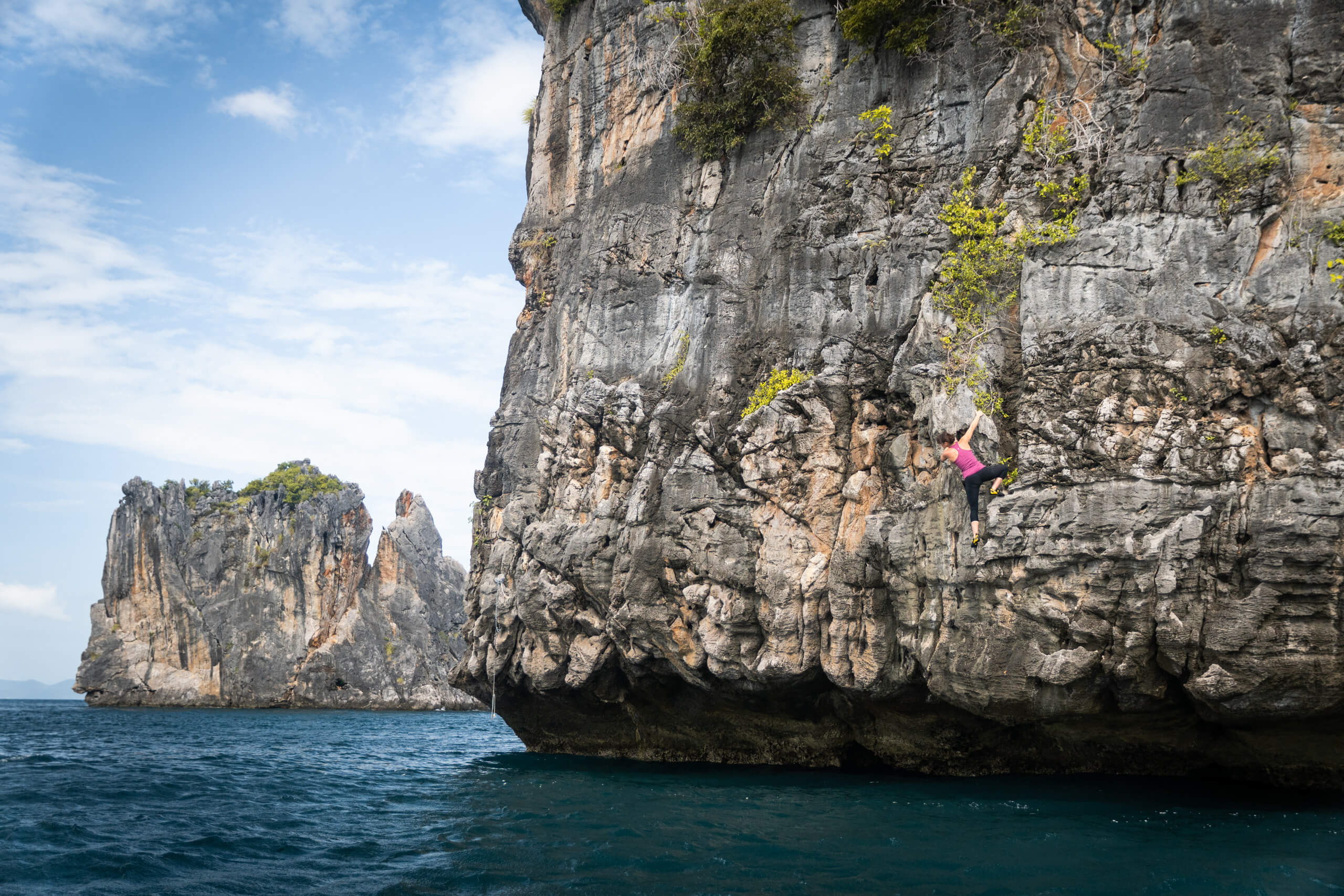
Deep water soloing in Thailand
Stepping off the kayak, my hands tightly grasping the swinging ladder in front of me. I take deep breaths in an attempt to slow my heart rate as I creep up the ladder and onto the route, one foot and then one hand over the other. Slowly, my palpable fear begins to dissipate, eclipsed by the beauty that now surrounds me. This is a once in a lifetime experience. This is deep water soloing in Thailand.
Deep water soloing, also known as psicobloc, is a sport in which rock climbers free solo (climb without ropes) over deep bodies of water. The water then serves as a type of natural crash pad, protecting climbers from their falls.
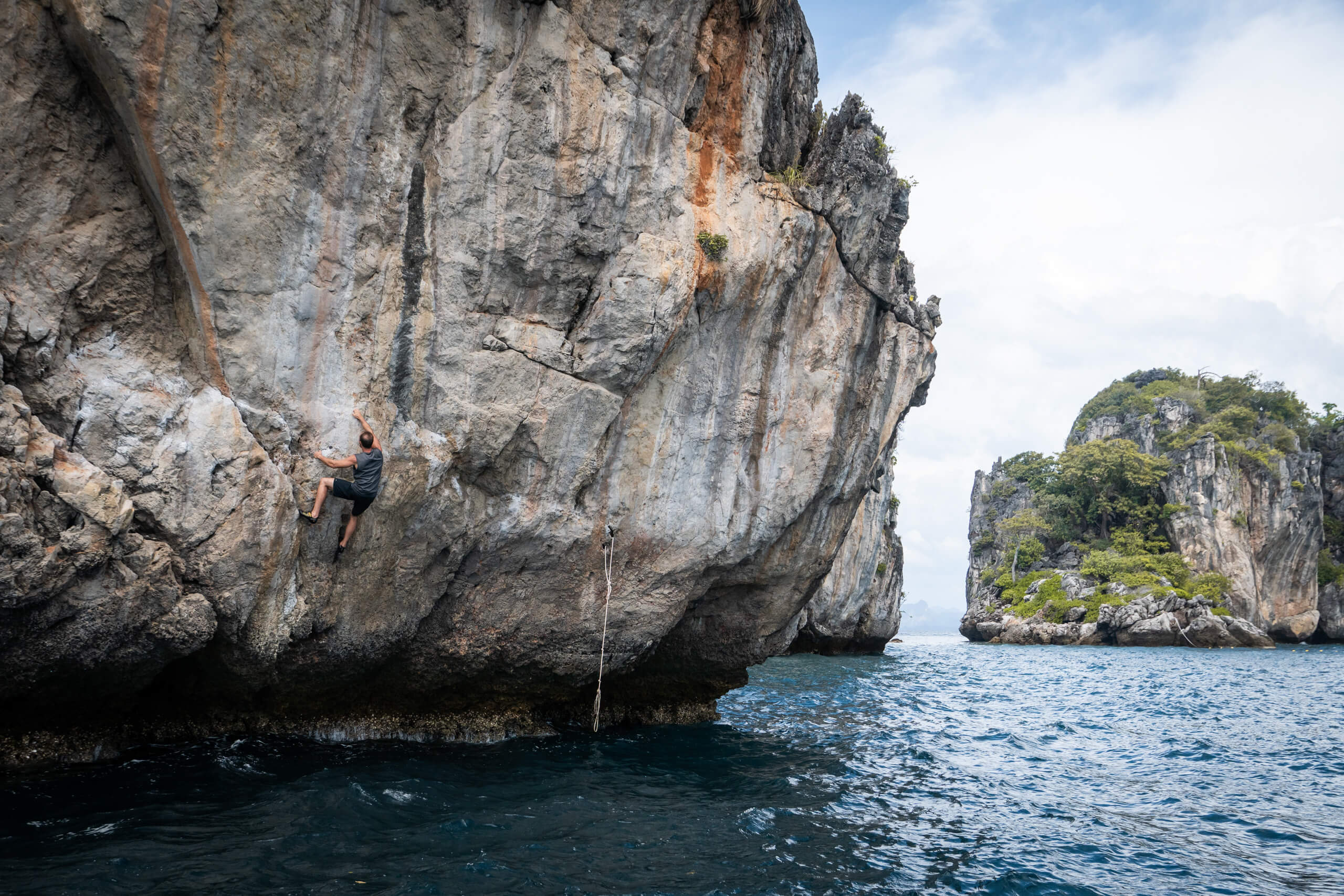
The sport actually originated in Mallorca, Spain when climber Miquel Riera got frustrated with how crowded his local climbing routes were getting. He ventured out to Porto Pi Palma and began bouldering routes along sea cliffs
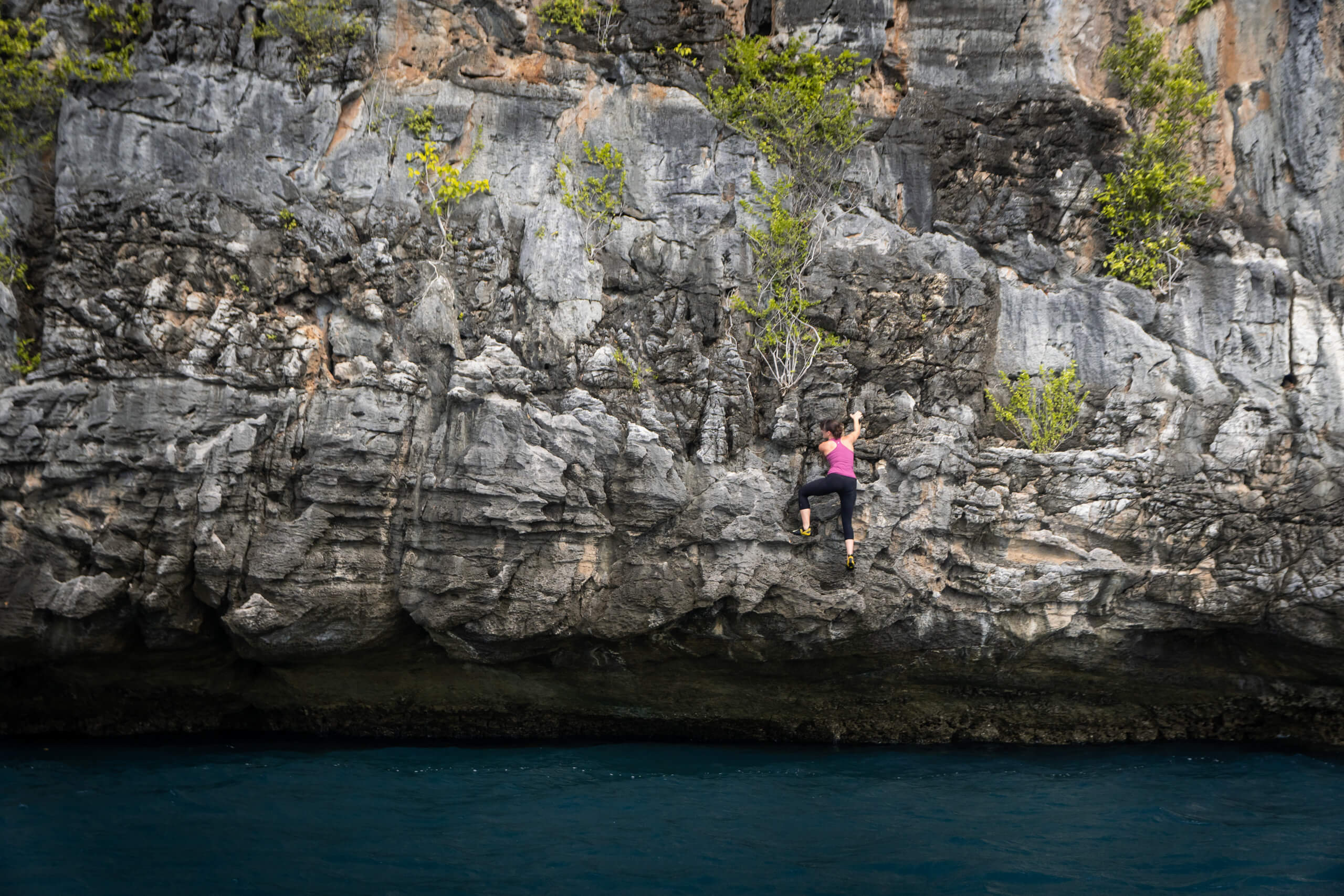
Routes for all skill levels
Since its inception, deep water soloing has grown significantly with numerous routes throughout Europe and Southeast Asia.
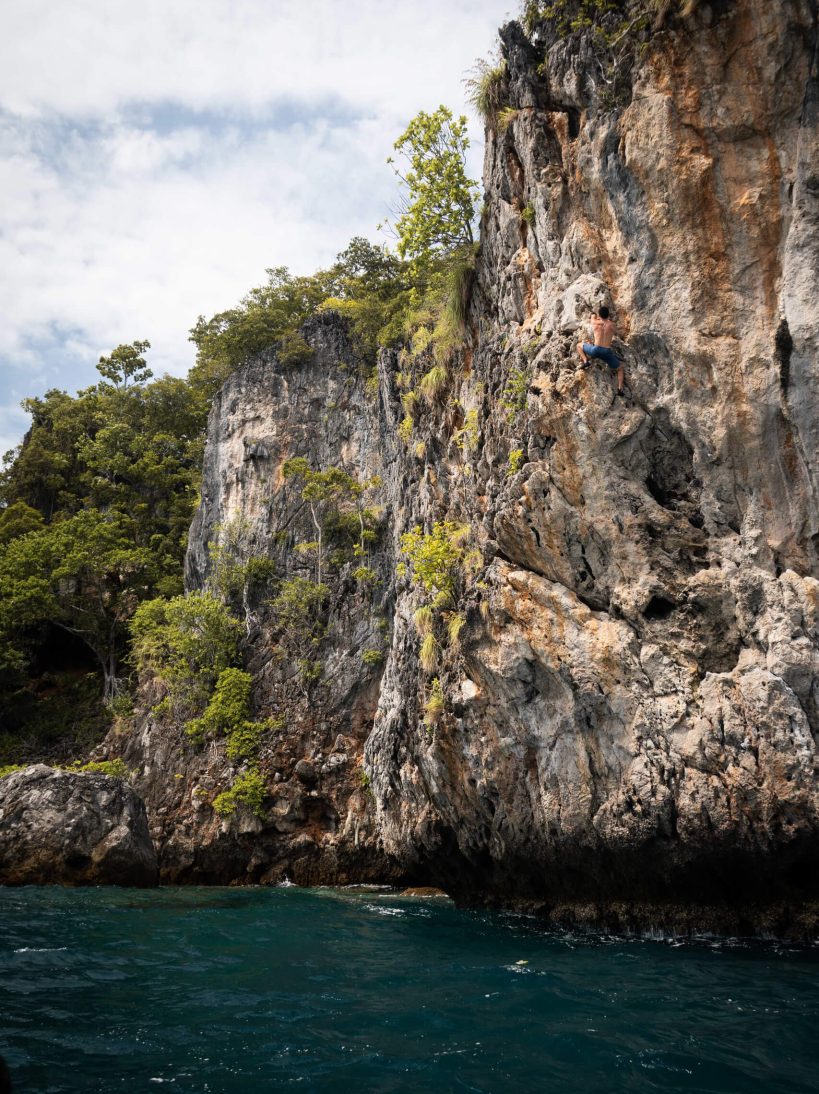
Endless limestone routes
When visiting Thailand, we chose to go deep water soloing with a company called Basecamp Tonsai, located in Railey Bay. If you are not local to the area, you will need to join a tour or company to go deep water soloing.
Total Trip Time: 6-7 hours
Price: 1,500 THB per person
Frequency of Trips: Deep Water Soloing trips run once per day if 4 or more climbers sign up. (Max of 8 people per day)
Equipment provided: chalk, lunch, water, and used climbing shoes
Signing up: Basecamp Tonsai recommends signing up in person 1-2 days prior to your desired trip date. If you are unable to go in person, you can attempt to sign up through email.
Basecamp Tonsai can be a little tricky to find. Start by taking a long tail boat from Ao Nang to Tonsai Beach. Then when you’ve located Tonsai Bay resort on Tonsai Beach, follow the path up behind the resort. You will be led through coconut trees to a wall with a bamboo ladder which is where Basecamp Tonsai is located.
Map via Basecamp Tonsai’s website
This is where you will check in to your deep water solo tour and meet the rest of your group members. This is also where you can pick out a pair of used shoes if you do not have or do not want to wear your own.

Basecamp Tonsai used shoes to pick from
You will begin by taking a motorized long tail boat out with your tour group to your first set of routes. Once arrived, your boat will anchor and a small kayak will individually climbers one by one from the boat to the rock to start climbing.
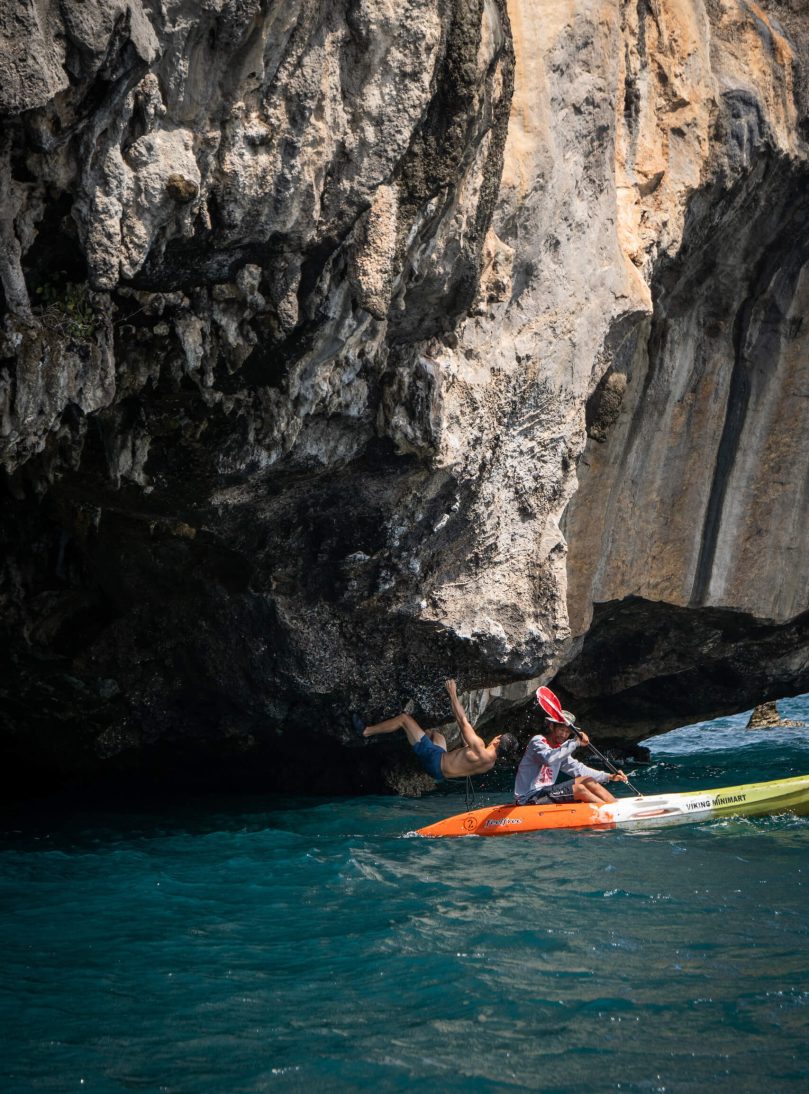
Kayak dropping climber off at an overhang start
There will be many different routes to choose from with varying difficulties. The boat captain will provide a map with the different routes and can guide you with landmarks once you’ve decided what route you’d like to tackle. When you are done, simply jump down into the ocean and swim the short distance back to the boat.

Starting a deep water soloing route
Following your first round of deep water soloing, your boat captain will bring the group to a secluded beach to enjoy a provided lunch. You will also have the option to swim and snorkle while you’re here.

Lunch at a secluded beach, only accessible by boat
After lunch, you will begin a 2nd round of deep water soloing at a different location with slightly more difficult routes (including overhangs). Again, everyone will take turns climbing and then jumping off into the ocean.
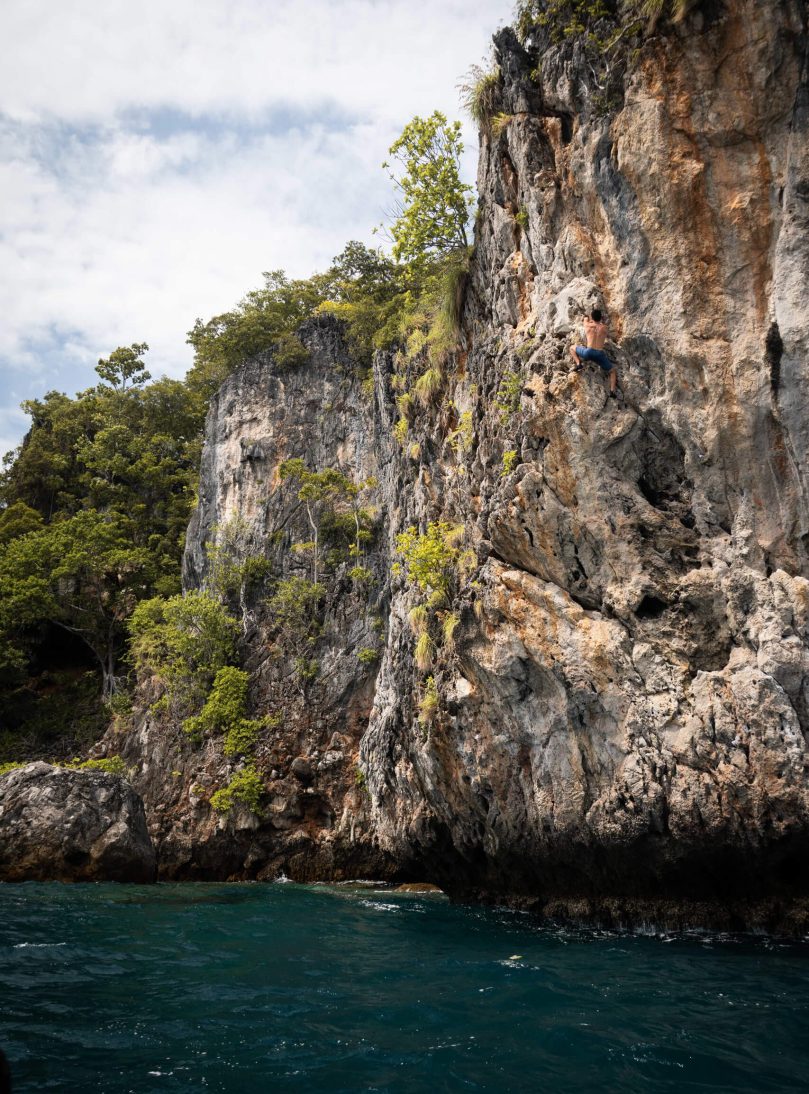
Higher Routes after lunch

When everyone has had their fair share of climbing, you will return to Basecamp Tonsai where you can change into dry clothes and return any borrowed equipment.

Sunset following the deep water soloing trip

Beginner deep water soloing routes
Not at all! I was a very beginner climber when I went to deep water solo with Basecamp Tonsai (probably climbing V1/V2s in the gym). As long as you can swim, and have a tour guide that knows the area well, you will have a great time even as a beginner.

There’s a possibility since the boats are anchored out at sea as people take turns climbing. However, I normally get very sea sick and simply opted to tred/swim around in the ocean when others were climbing and did not experience any symptoms at all.

Starting a route from the rope ladder
Bring a swimsuit, sunscreen, rock climbing shoes you don’t mind getting wet and some dry clothes to change into afterward. Some other optional gear include: a reusable water bottle, dry bag, and waterproof camera gear.
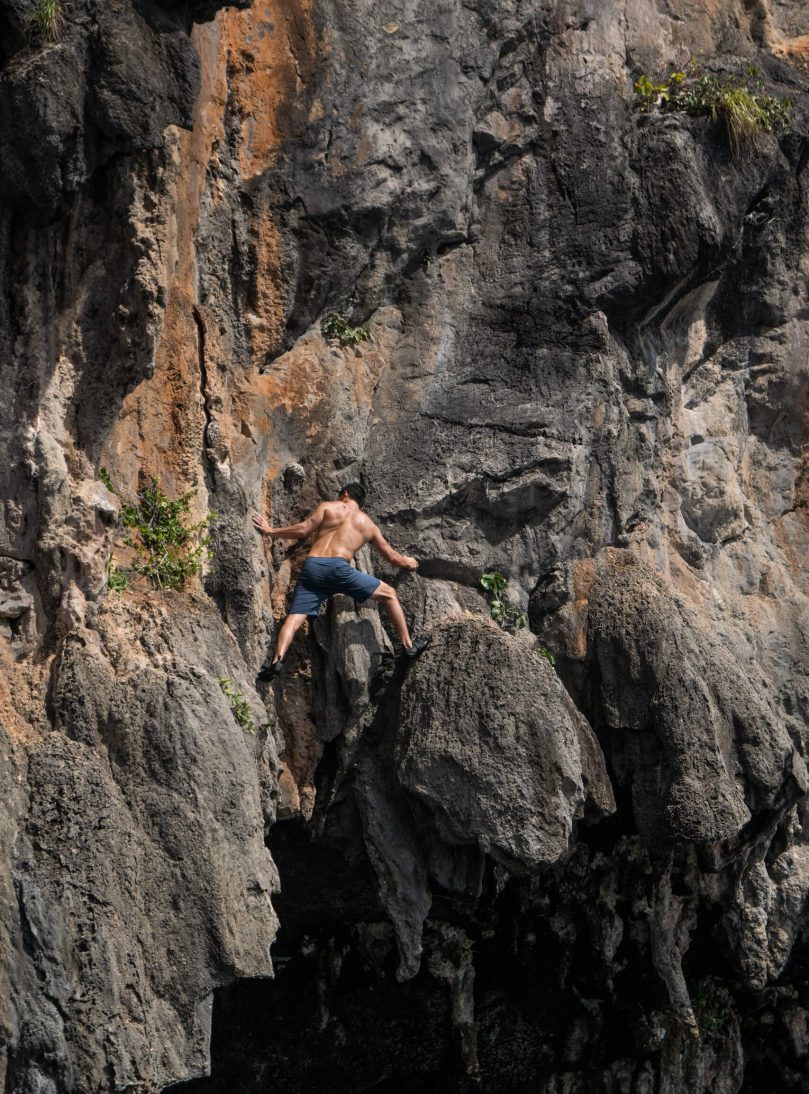
To my knowledge, Basecamp Tonsai still does not offer any photograph packages/courtesy photos, so make sure to bring your own camera gear.
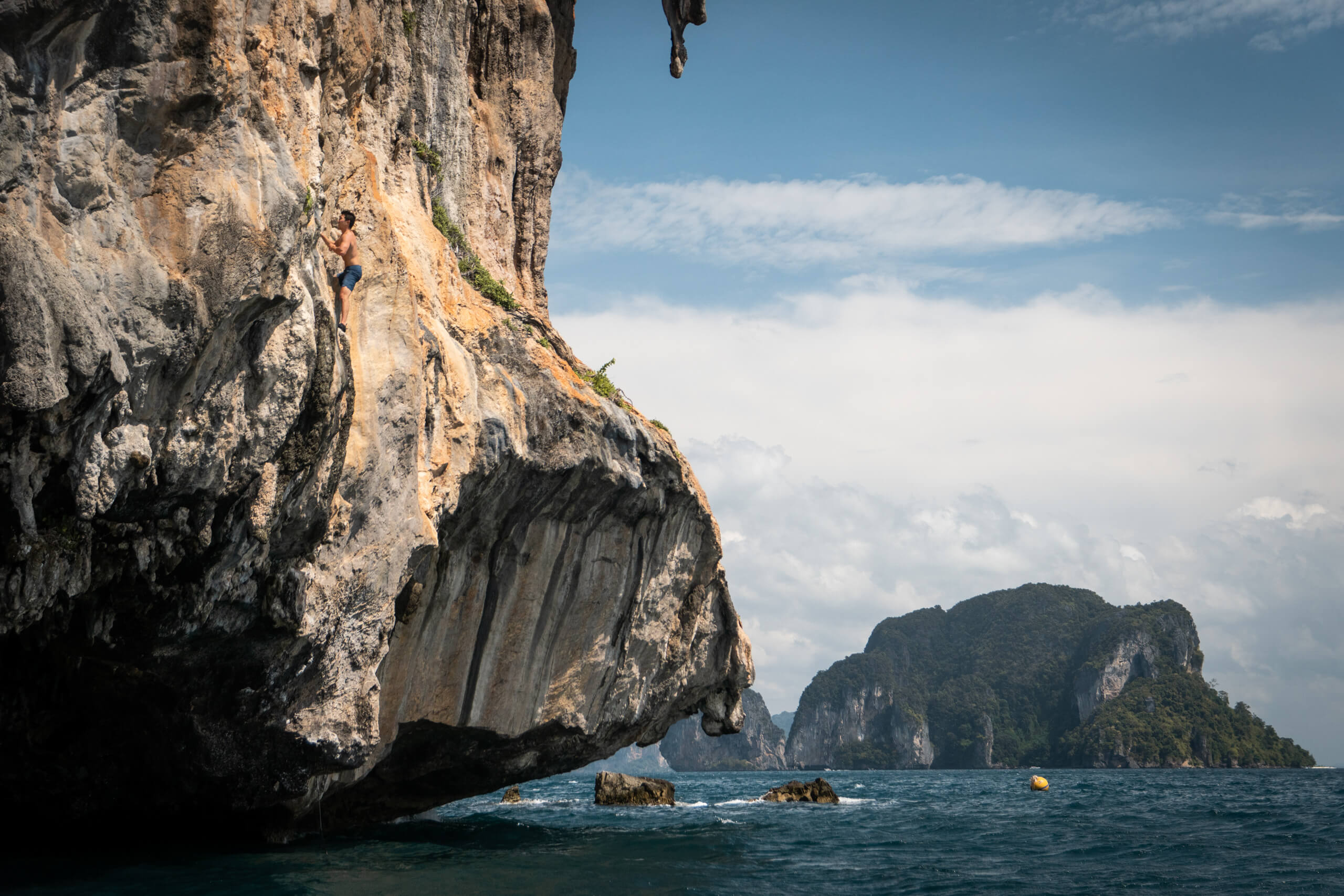
Deep water soloing in Thailand was the hi-light of our trip and I would recommend it to anyone who loves to rock climb, regardless of skill level. Let me know in the comments below if you’ve gotten the chance to experience it yourself! I’d love to connect.
Photos were taken in Collaboration with Matt Tonokawa
No Comments